

History of Journalism
India has a long history of the freedom struggle that included various challenges.
The freedom of the Press in India has also endured a saga of fights against draconian authorities which attempted to suppress information.
Pre-independence
The first newspaper in India is credited to James Augustus Hickey, who launched The Bengal Gazette, also the Calcutta General Advertiser, in 1780. The paper lasted just two years before being seized by the British administration in 1782 for its outspoken criticism of the Raj.
Several other newspapers followed such as The Bengal Journal, Calcutta Chronicle, Madras Courier, and Bombay Herald. All of them, however, were curtailed by censorship measures imposed by the British East India Company.
Throughout 1799, 1818 and 1823, the colonial administration enacted several Acts to regulate the press in the country. The legislative outlier during this period was the Press Act of 1835, better known as the Metcalfe Act, which introduced a more liberal press policy.
This lasted till the revolt of 1857, after which, a perturbed foreign administration, shaken by the mutiny, introduced the Licensing Act in 1857. It gave the colonial administration the powers to stop publication and circulation of any printed material.
In 1867, the administration enacted the Registration Act, which required every book or newspaper to bear the name of the printer, the publisher and the place of publication. Additionally, all books were to be submitted to the local government within a month of their publication.
One of the most stringent regulations on the freedom of the press in India was the Vernacular Press Act of 1878. Introduced by then Viceroy, Lord Lytton, this act provided the government with extensive rights to censor reports and editorials in the vernacular press. It was an attempt to prevent the vernacular press from criticising British policies. The measure was an answer to the shortcomings of the ‘Gagging Act’, which the press was impervious to.
With reference to the Vernacular Press Act, a special mention of Bengal’s Amrita Bazar Patrika gives a glimpse into the spirit of the Indian press at the time. After the Vernacular Press Act was imposed, Amrita Bazar Patrika began publishing in English too, as the Act was not imposed on English newspapers.
Four new measures were enacted between 1908 and 1912 — the Newspapers (Incitement to Offences) Act and the Criminal Law Amendment Act of 1908, the Press Act of 1910 and the Prevention of Seditious Meetings Act of 1911.
The Press Act of 1910 particularly hit Indian papers hard. It empowered the local government to demand a security fee for any ‘offensive content’ against the government. Nearly 1,000 papers were prosecuted under the Act.
Mahatma Gandhi’s Salt Satyagraha widely used the Press to rally the masses against the British. This further heightened the tension between the Press and the government. With Gandhi’s arrest in 1930, the government enacted The Press (Emergency Powers) Act of 1931. It gave the provincial governments censorship powers.
The outbreak of the Second World War in September 1939 brought further restrictions. The government demanded stiffer censorship, in spite of the Press Emergency Act of 1931. It controlled and filtered international news that was coming in.
Amidst such acts of censorship, the All-India Newspapers Editors’ Conference was conceived. It was aimed to be a protector of press rights in the country. It fought with the British government to lift the restrictions and advocated for better relations with the government.
Post Independence
The Press Enquiry Committee was set up in 1947 with the aim of examining press laws in the light of fundamental rights formulated by the Constituent Assembly.
In 1951, the Press (Objectionable Matters) Act was passed along with an amendment to Article 19 (2), which empowered the government to demand and forfeit security for publication of “objectionable matter”. It remained in force till 1956.
A Press Commission was set up under Justice Rajadhyaksha in 1954. A major recommendation of the committee was the establishment of the All India Press Council. It was formally established on 4 July, 1966, as an autonomous, statutory, quasi-judicial body, with Justice J.R. Mudholkar, then a judge of the Supreme Court, as chairman.
Other Acts passed include Delivering of Books and Newspapers (Public Libraries) Act, 1954; Working Journalists (Conditions of Services) and Miscellaneous Provisions Act, 1955; Newspaper (Price and Page) Act, 1956; and Parliamentary Proceedings (Protection of Publications) Act, 1960.
Today, there is no formal body that exclusively deals with the freedom of Press in the country. All matters concerning the freedom of the Press falls under Article 19(1)(a) of the Constitution, which states that “All citizens shall have the right to freedom of speech and expression…” . These freedoms are restricted under Article 19(2) that prevents absolute power under 19(1).
Other self-regulatory organisations such as News Broadcasters Association (NBA) and Broadcast Editors Association (BEA) were established that self- regulates the news content aired on television.
The electronic media complies with the guidelines of Central News Media Accreditation Guidelines, 1999, which falls under the Central Press Accreditation Committee that grants accreditation to the representatives of media organisations.
Press in British India: The History of Indian Journalism
Last updated on January 8, 2022 by ClearIAS Team

The British are attributed to introducing independent press or participatory journalism in India during the colonial period.
But the British administration put more effort into curbing the Indian press to restrict the nationalistic sentiments propagated through them.
Table of Contents
History of Press in India during British rule
Here is a brief history of the development of the press before independence.
1780: James Augustus Hickey started ‘The Bengal Gazette’ also known as ‘Calcutta General advertiser’ . This was the first newspaper published in India which was later stopped because it carried critical articles against the company.
1799: Governor-General Richard Wellesley enacted the Censorship of Press Act, 1799 to stop the French from publishing anything against the British. This act brought all the newspapers under Government scrutiny before their publication. This act was later extended in 1807 and covered all kinds of Press Publications newspapers, magazines, books, and Pamphlets. The rules were relaxed in 1818 when Francis Hastings (1813-1823) assumed office.
1823: Licensing Regulation ordinance was brought out by acting Governor-General John Adams . This regulation made press without a license a penal offence. The restriction was directed mainly at Indian-language newspapers or those edited by the Indians. This caused Raja Ram Mohun Roy to repeal his Persian journal ‘Mirat-ul-akhbar’ started in 1822.
Join Now: UPSC Prelims cum Mains Course
1824: Raja Ram Mohun Roy protested against the restriction on freedom of the press.
1835: Press act or Metcalfe act , repealed the Licensing regulations of 1823. Gov.Gen. Metcalfe came to be known as the ‘liberator of the press’ in India. The act required a printer/publisher to give a precise account of the premises of a publication and cease functioning if required by a similar declaration. The result of a liberal press policy was the rapid growth of newspapers.
1857: Licensing act was enacted by Gov. Gen Canning (later Viceroy in 1858) after the Revolt of 1857 to impose stricter restrictions on the press. The right to stop the publication and circulation of any book, newspaper or printed matter was reserved with the Government.
1867: The registration act replaced the Metcalfe act of 1835. The act was said to introduce regulations and no restrictions on the press. The print media now was made to contain the name of the printer, publisher, and place of publication and a copy had to be submitted to the government.
1878: Vernacular Press act by Viceroy Lytton was enacted to curtail the freedom of Indian language newspapers ( this law did not apply to English language papers) . This was the result of the racial bitterness that has grown between then Indians and Europeans after the incidents of 1857.
Join Now: CSAT Course
- The district magistrate was given powers to make the printer and publisher of any vernacular newspaper enter into a bond with the Government stating not to cause disaffection against the government or antipathy between persons of different religions, caste, and races through published material.
- The printer and publisher could also be required to deposit security which could be seized if the above offences reoccurred.
- The magistrate’s action was final and no appeal could be made in a court of law.
- A vernacular newspaper could get an exemption from the operation of the Act by submitting proof to a government censor.
1882: The pre-censorship of the Vernacular press act was repealed by Viceroy Ripon .
1908: Newspaper (incitement to offence) Act gave the magistrates power to confiscate press property that published objectionable material likely to cause incitement to murder or acts of violence. This act was triggered by the Extremist nationalist activity during and after the Swadeshi movement of 1906 .
1910: Indian press act was a revision of the Vernacular Press Act that empowered the local government to demand a large amount of security at registration from the printer/publisher and forfeit/deregister of newspapers that considered anti-government, and the printer of a newspaper was required to submit two copies of each issue to local government.
1921: The acts of 1908 and 1910 were repealed on the recommendation of the Press committee chaired by Sir Tej Bahadur Sapru.
1931: Indian Press (emergency powers) Act was enacted in the wake of the Civil disobedience movement . It gave powers to the provincial government to suppress propaganda writings in the support of Civil Disobedience movement.
Join Now: UPSC Prelims Test Series
Important journals or newspapers vs their authors:
- Bengal gazette – J.A Hickey
- Maharatta (English), Kesari (Marathi) – Bal Gangadhar Tilak
- Hitavada – Gopal Krishna Gokhale
- Sudharak – Gopal Ganesh Agarkar
- Voice of India, Rast Goftar – Dadabai Naororji
- Vande Mataram, Paridasak – Bipin Chandra Pal
- Mook Nayak, Janata, Bahishkrut bharat – Dr. B.R amberdkar
- Prabuddha Bharata – Aiyasami, B. R. Rajam Iyer, G. G.Narasimhacharya, and B. V. Kamesvara Iyer (on behest of Swami Vivekananda)
- Independent – Motilal Nehru
- Punjabi – Lala Lajpat Rai
- The leader, Hindostan, Abyudyaya, Maryada – Madan Mohan Malviya
- New India, Commonweal – Annie Besant
- Mirat-ul-Akhbar, Sambad kaumudi – Raja Ram Mohun Roy
- Navajeevan, Young India, Harijan, Indian opinion (South Africa) – M.K Gandhi
- Indian mirror – Devendra Nath Tagore
- Som Prakash – Eshwar Chand Vidyasagar
- The Hindu, Swadesamitram – G. Subramaniya Aiyar
- The Bengalee – Surendra Nath Banerjee
- Amrita Bazaar Patrika – Sisir Kumar Ghosh and Motilal Ghosh
- Madras courier – Richard Johnson
The above events and personalities shaped modern journalism in India to what we see today.
The press was and still is a medium of change in the world and hence a very powerful tool in itself.
History is in itself a fine example of press and journalism helps in shaping the socio-religious, as well as the political scenario of a country.

Take a Test: Analyse Your Progress
Aim IAS, IPS, or IFS?

About ClearIAS Team
ClearIAS is one of the most trusted learning platforms in India for UPSC preparation. Around 1 million aspirants learn from the ClearIAS every month.
Our courses and training methods are different from traditional coaching. We give special emphasis on smart work and personal mentorship. Many UPSC toppers thank ClearIAS for our role in their success.
Download the ClearIAS mobile apps now to supplement your self-study efforts with ClearIAS smart-study training.
Don’t lose out without playing the right game!
Follow the ClearIAS Prelims cum Mains (PCM) Integrated Approach.
Join ClearIAS PCM Course Now
UPSC Online Preparation
- Union Public Service Commission (UPSC)
- Indian Administrative Service (IAS)
- Indian Police Service (IPS)
- IAS Exam Eligibility
- UPSC Free Study Materials
- UPSC Exam Guidance
- UPSC Prelims Test Series
- UPSC Syllabus
- UPSC Online
- UPSC Prelims
- UPSC Interview
- UPSC Toppers
- UPSC Previous Year Qns
- UPSC Age Calculator
- UPSC Calendar 2024
- About ClearIAS
- ClearIAS Programs
- ClearIAS Fee Structure
- IAS Coaching
- UPSC Coaching
- UPSC Online Coaching
- ClearIAS Blog
- Important Updates
- Announcements
- Book Review
- ClearIAS App
- Work with us
- Advertise with us
- Privacy Policy
- Terms and Conditions
- Talk to Your Mentor
Featured on

and many more...
DailyPicked
The history of journalism in india, the emergence of radio, television and the internet.
Newspapers and magazines have always been the primary medium of journalists since the 18th century. We saw the emergence of radio and television in the 20th century and the Internet in the 21st century. Journalism is not naturally Indian. Starting in Europe, journalism emerged as something so crucial to a Indian’s life that a day that does not commence with flipping the pages to a newspaper, sounds odd to the average Indian.

The history of journalism ranges over the growth of technology and trade, marked by the dawn of specialized techniques for gathering and disseminating information on a regular basis that has caused the steady increase of the scope of news and the speed with which it is transmitted.
[elementor-template id=”573″]
Before the printing press was invented, word of mouth was the primary source of news and this method of transmission of news was highly unreliable, and died out with the invention of the printing press.
Pre Independence Period

The pre-independence phase saw Wall Porter as the front-runner of newspapers in Europe. All the newspapers we know today are of European origin, however, it did not take shape until the early years of the 18th century. The Wall Porter, initially called ‘Notize Secrette’ which meant ‘Written Notices’ first appeared in Venice and was displayed in public places.
A small coin called ‘gazette’ was levied as a token fee. The Chinese discovered the art of printing in 868 AD. In 1476, the first printing press was established in England. 8-paged newsletters came in London and Italy both, in the 16 th century. News books were published in 1513. In 1621, a n/p appeared in London.
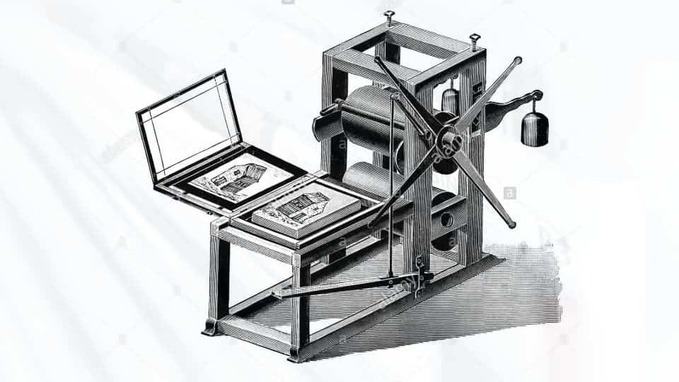
It was a primitive news sheet called Coranto and it carried only foreign news. First domestic news came in 1628. A new era of journalism was ushered with the publication of ‘Oxford Gazette’ in 1655. In March 1702, the first daily newspaper appeared in London under the name ‘Daily Courant.’
James Augustus Hicky launched the first print in India called ‘Bengal Gazette’ or ‘Calcutta General Advertiser’ on Jan 29,1780. Bengal Gazette announced itself as ‘a weekly political and commercial paper open to all parties but influenced by none’. It was a two-sheet paper measuring 12 inches by 8 inches, most of the space being occupied by advertisements.
Its circulation reached a maximum of 200 copies. Within six years of Bengal Gazette, four more weeklies were launched in Kolkata. ‘Madras Courier’ was launched in 1782 and Bombay Herald in 1791.
‘Bombay Courier’ was launched in 1792. In 1799, the East India administration passed regulations to increase its control over the press, which caused disruption in the existing peace in the field of journalism. The first newspaper under Indian administration appeared almost after 17 years, in 1816.

It was also called Bengal Gazette and was published by Gangadhar Bhattacharjee and was a liberal paper which advocated the reforms of Raja Ram Mohan Roy. Raja Ram Mohan Roy brought out a magazine in Persian called ‘Mirat-ul-Ukhbar’. He also published The ‘Brahmanical Magazine’, an English periodical to counteract the religious propaganda of the Christian missionaries of Serampore.
In 1822, the ‘Chandrika Samachar’ was started in Bengal. The years of 1830 to 1857 saw a large number of short-lived newspapers in Indian languages like Bengali, Gujarati, Marathi, Urdu and Persian.
The advent of 1857 brought out the divide between Indian owned and British owned newspapers as during the Indian Rebellion of 1857, the “Gagging Act” had been passed by Lord Canning which sought to regulate the establishment of printing presses and to restrain the tone of all printed matter.

After 1857, the pioneering efforts in newspapers shifted from Bengal to Mumbai. In 1861, Mr. Knight merged the ‘Bombay Standard’, ‘Bombay Times’ and ‘Telegraph’, and brought out the first issue of ‘ Times of India ’. In 1875, he started ‘Indian Statesman’, now known as ‘The Statesman’. Around the same time, ‘Amrita Bazar Patrika’ was able to establish itself in Kolkata.
Starting out as a vernacular paper, it was constantly in trouble due to its outspokenness. In order to circumvent the strict provision of the Vernacular Press Act in 1876, intended to prevent the vernacular press from expressing criticism of British policies, Amrita Bazar Patrika converted into an English newspaper.
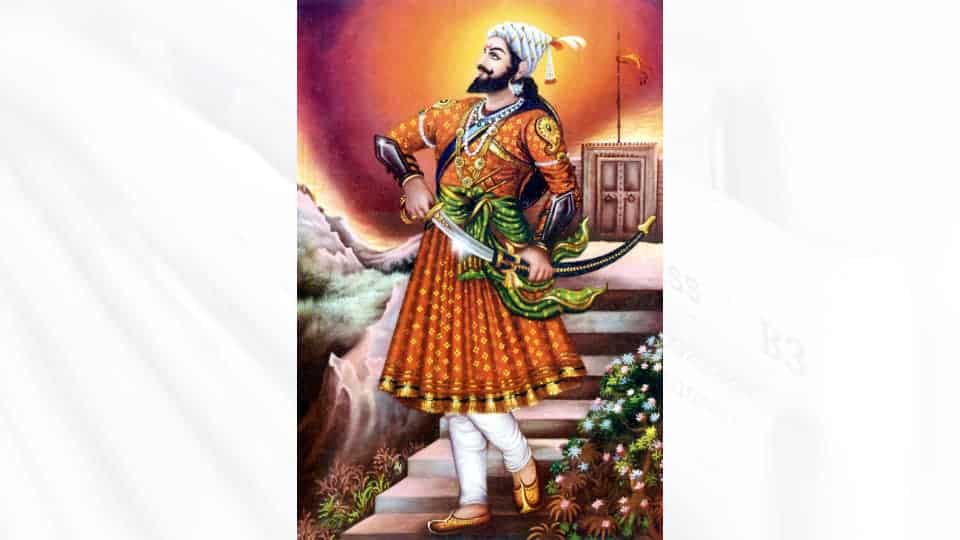
Amrita Bazar Patrika inspired freedom fighter Lokmanya Tilak to start Kesari in Pune, which he used to build anti-cow killing societies and reviving the Chhatrapati Shivaji cult. He used mass communication as a powerful political weapon, something politicians of the 21st century have quickly learnt. By 1905, the English and vernacular press had become pretty professional.

The 1920s and 1930s saw newspapers that reflected popular political opinion. While big English dailies were loyal to the British government, the vernacular press was strongly nationalist. Nehru started the Independent of Lucknow as a newspaper of extreme Indian opinion. The Home Rule Party started Young India, which later became Mahatma Gandhiji’s mouthpiece.
As more and more Indians started learning English, many became reporters, editors and even owners. The Anglo-Indian press began to lose ground except in Bombay and Calcutta. In 1927, industrialist G D Birla took over the infamous, Hindustan Times and placed it on a sound financial footing.
Post Independence
(1974-Present)

In the post-independence era, the press enjoyed a large measure of freedom because Pandit Jawaharlal Nehru, the first Prime Minster of India was a liberal who realized that for the successful functioning of democratic set-up, the freedom of the press was crucial. Although Nehru was a liberal and believed in freedom of the press, but he was forced to enact laws curbing freedom of the press after independence in order to check increasing writings with communal overtones.
He found that the press was contributing to the already difficult situation created by the partition of India on communal lines. On October 23, 1951, he got new Act passed called ‘ The Press Objectionable Matters Act ’ which was a reflection of Nehru’s concern over the newspapers’ role in rousing communal discontent in India. Objectionable matters included any words, signs, or visible representations which were likely to incite or encourage any person to resort to violence or sabotage for the purpose of overthrowing or undermine the Government.
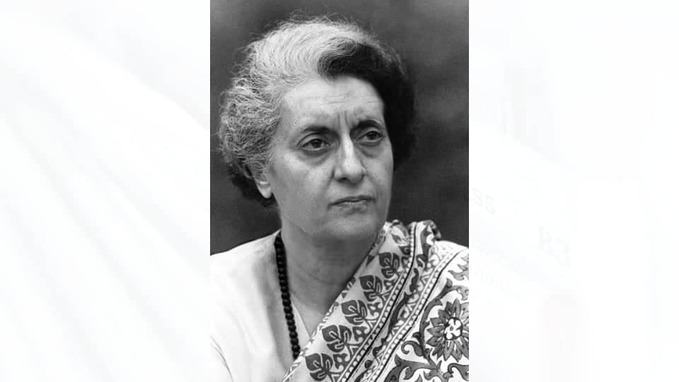
However, during Indira Gandhi ’s regime, she expected that the press should blindly support her government without questioning her ability to deliver the goods. In 1971, the government led by Mrs. Gandhi made its first attempt to control the press when her own ministry of Information and Broadcasting. Indira Gandhi’s son, Rajiv Gandhi, became Prime Minister after the assassination of his mother in 1984. He had a smooth relationship with the public and the press for the first few years.

The press started becoming critical of his government afterwards and so, he got the Defamation Bill, 1988, passed in Lok Sabha, thereby making an attempt to suppress the press. The mounting pressure of the public and the press forced the government to withdraw the Bill without referring it to the Rajya Sabha. Looks like both the mother and the son did not handle criticism well.
Economic liberalization in ’91 also brought in new resources, including foreign money, which in turn induced new morals and manners. Journalists were now paid handsomely and the profession attracted new talent and television journalism changed dramatically. After 1991, a kind of corporation of the media was inevitable.

The upside was that the newspapers were no longer entirely dependent upon the government for advertisements, nor were the journalists dependent upon the government’s discretion. After 1991, successive minority governments in Delhi found themselves having to humor and appease an increasingly aggressive media, demanding a role for itself in determining the public interest. However, Narendra Modi disrupted this arrangement. He bypassed the newspapers, using television to reach the people, which well, has proved to e very effective.
Also Read: Top 10 Dancers In The World , A Few Names May Surprise You

National Institute of Mass Communication & Journalism, Ahmedabad
( Affiliated by Gujarat University )
Inquiry for BAJMC(Hons.)* / MAJMC
Registration for bajmc(hons.)*/majmc.

History of Journalism in India
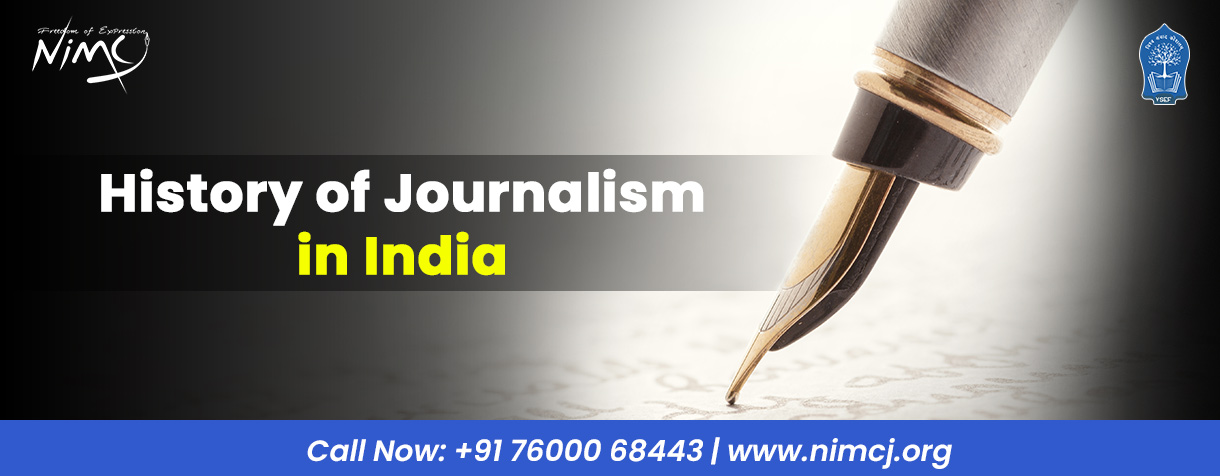
Journalism has a long and rich history in India, dating back to the 18th century. The country has been witness to a plethora of events that have had a significant impact on the evolution of journalism, from the Indian Rebellion of 1857 to the freedom struggle against British colonial rule. In this blog, we will explore the history of journalism in India, tracing its roots from the early days to the present day.
The Early Days of Indian Journalism
As mentioned earlier, the first newspaper in India, the Bengal Gazette, was launched in 1780 by James Augustus Hickey. The paper was published in English and had a circulation of only 400 copies. Despite its small readership, the Bengal Gazette paved the way for the growth of the Indian press.
In the early years of Indian journalism, most newspapers were owned and operated by British colonizers. These newspapers mainly focused on the interests of the British ruling class and catered to their needs. However, as Indian nationalism grew, Indian journalists began to challenge British dominance in the media and started publishing newspapers that reflected the views and aspirations of the Indian people.
The Indian Rebellion of 1857 and Its Impact on Journalism
The Indian Rebellion of 1857 marked a turning point in Indian journalism. The Indian media, which until then had been dominated by British publishers, saw a surge in the number of Indian-owned newspapers. These newspapers played a crucial role in the freedom struggle, reporting on the atrocities committed by the British and mobilizing public opinion against them.
The Emergence of Nationalist Journalism
The early 20th century saw the emergence of nationalist journalism in India. Newspapers such as The Hindu, The Indian Express, and the Amrita Bazar Patrika played a key role in promoting the ideals of Indian nationalism and independence from British rule. These newspapers also played a crucial role in shaping public opinion during the freedom struggle.
The Role of Radio and Television in Indian Journalism
The 20th century also saw the emergence of radio and television as important mediums of journalism in India. The All India Radio was established in 1936 and played a crucial role in disseminating news and information to the masses. The emergence of television in the 1950s further strengthened the role of journalism in India.
Contemporary Indian Journalism
Today, Indian journalism is a vibrant and dynamic industry. The country has over 100,000 registered newspapers, over 500 news channels, and countless online news portals. Indian journalists are playing a crucial role in reporting on a wide range of issues, from politics and economics to social issues and entertainment.
The Digital Age
The advent of the internet and digital media has revolutionized the field of journalism in India. Today, there are numerous online news portals, blogs, and social media platforms that provide real-time news and information to millions of Indians.
The rise of digital media has also given rise to new challenges and opportunities for Indian journalism. Fake news , propaganda, and misinformation are significant threats to the credibility of the media. At the same time, the internet has made it possible for journalists to reach a global audience and tell stories that would have been impossible to tell a few decades ago.
The history of journalism in India is a long and fascinating one, marked by a series of events that have had a significant impact on its evolution. From its early days as a British-dominated industry to its present-day status as a vibrant and dynamic industry, Indian journalism has come a long way. This article has provided a comprehensive overview of the history of journalism in India, tracing its roots from the early days to the present day.
Read Next Blog:
16 Mar 2023
Post by : NIMCJ

History of Journalism in India
A person known by the name of James Hicky started a paper after seeking permission of the East India Company. This newspaper was called ‘Bengal Gazette’ (or Calcutta general advertiser). The entire newspaper consisted of only 4 pages. The newspaper was well-known for fearlessly criticizing the money-making and political policies of the East India Company.
Bombay Courier was launched in 1792, this newspaper published advertisements in English and Gujarati. 1816, was the year when the first newspaper under Indian Administration appeared. It was the “Bengal Gazette” which was published by Gangadhar Bhattacharjee. It advocated the reforms of Raja Ram Mohan Roy. To counteract the religious propaganda of the Christian missionaries of Serampore, Raja Ram Mohan Roy published The Brahmanical Magazine.1822 saw the rise of Chandrika Samachar in Bengal and Bombay Samachar in Mumbai by Ferdunji Marzban. Oodunt Martand was the first Hindi newspaper, which was published in 1826 in Bengal. Later came Jami Jahan Numa, a newspaper that was pro-establishment. Pune saw its first Anglo – Marathi Newspaper in 1832 which was published by Bal Shastri Jambhekar In 1861, Mr Knight merged the Bombay Standard, Bombay Times and Telegraph and brought out the first issue of Times of India .
Hicky was imprisoned, for fighting for the liberty of press, his paper was stopped. But from 1780-1793, 6 papers were started in Calcutta, 3 in Madras and 3 in Bombay. This was the basic foundation of free press of India. During this era, the birth of vernacular press took place which mainly wrote about liberal views and was also spreading knowledge about various matters. An important paper called Bombay Times was founded in 1838. Now the Bombay Times is known as Times of India. In the fight against British, few papers played a very noteworthy role. This included ‘Hindu Patriot’ which launched movements against the British by asking the people not to grow crops for the British traders. Bal Gangadhar Tilak, owner of the newspaper ‘Kesari’, ignited the fire of independence in millions.
One of the pioneers of Indian language journalism was Raja Ram Mohan Roy with his Persian newspaper Miratool Akbar. He created the newspaper in order to indicate to the rulers’ knowledge of the real situation of their subjects and make the subjects acquainted with the established laws and customs of their rules. Roy later stopped later in protest against the Government’s Press Regulations.
Another important newspaper that contributed in the freedom struggle was Bengal Gazette or as it was also known, Hicky’s Gazette. James Augustus Hicky started it in 1780 ‘in order to purchase freedom for my mind and soul’. ‘A weekly political and commercial paper, open to all parties but influenced by none.’ The paper was, in essence, no better than a scandal sheet. Thus, in the next year (1981), Hicky was arrested and put into jail, from where he continued to write for the Gazette.
Restrictions were brought back in the form of Gagging Act, 1857. This was the year of what the British historians termed ‘the Sepoy Mutiny’, while a few Indian historians called it the ‘first war of Independence’. The Mutiny brought the rule of the East India Company to a close, with the Crown taking over the ‘colony’, with the promise of religious toleration and press freedom. The main topics of discussion in the English and vernacular press before and after the Mutiny were sati, caste, widow remarriage, polygamy, crimes and opposition to the teaching of English in schools and colleges. Bombay’s Gujarati press, in particular, excelled in the defence of the Indian way of life. In 1876, the Vernacular Press Act was promulgated. The English-controlled papers like The Times of India, the Pioneer and the Madras Mail didn’t report it to a great extent. However, the vernacular papers like Amrit Bazar Patrika and Kesari reported the inaugural meeting at length.
Despite the hold the television industry has on the country, it is the print press which is attracting more advertisers, making up 47% of the whole share. Newspapers in the current time have penetrated only 25% of the total population of the country. It is true that these days, the digital technology is mauling the traditional print newspaper. One of the reasons why this digital phase has not affected India that much is because only 7% of the Indians surf the Internet regularly. The rich English language, extremely cheap cost and the total availability of the newspapers also help in their sale.
The growth of India’s economy has had its impact on the newspaper industry. The circulation increased, resulting in increased revenues. Here, the dailies in the regional languages command more than half of the average readership, as per a report in 2010. There are 90 million readers of dailies in the regional languages as compared to 54 million for dailies in Hindi and 8 million for dailies in English.
Click here for government certification in Media
Share this post
9 Comments . Leave new
wowww content
Its very informative. You explained history well.. interesting read.. keep going..
Its always good to know the beginning
Very nice article!
Wow a big salute for the content that you have very well researched 😀 The presentation as well as the content is like 5/5 “D Yup the start of this awesome field is also really Awesome 😀 Keep it up 😀 keep it up 😀
But Bengal Gazette was a 2 paged weekly.
And he was imprisoned for attacking Warren Hastings his wife and Elijah Impey(chief justice) through his newspaper.
Actually it is best formate o read history of Indian journalism.. If it is enhence with some things in points, it will more interesting to read. Totally good.

Leave a Reply Cancel reply
Your email address will not be published. Required fields are marked *
Post Comment
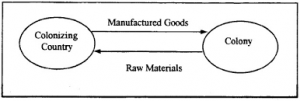
Get Govt. Certified Secure Assured Job Interview
Government certificate
Lifetime Valid
Job Support
Industry Recognized
Upgrade Your Job Skills Now!
Get industry recognized certification – contact us.
We will keep fighting for all libraries - stand with us!
Internet Archive Audio

- This Just In
- Grateful Dead
- Old Time Radio
- 78 RPMs and Cylinder Recordings
- Audio Books & Poetry
- Computers, Technology and Science
- Music, Arts & Culture
- News & Public Affairs
- Spirituality & Religion
- Radio News Archive

- Flickr Commons
- Occupy Wall Street Flickr
- NASA Images
- Solar System Collection
- Ames Research Center

- All Software
- Old School Emulation
- MS-DOS Games
- Historical Software
- Classic PC Games
- Software Library
- Kodi Archive and Support File
- Vintage Software
- CD-ROM Software
- CD-ROM Software Library
- Software Sites
- Tucows Software Library
- Shareware CD-ROMs
- Software Capsules Compilation
- CD-ROM Images
- ZX Spectrum
- DOOM Level CD

- Smithsonian Libraries
- FEDLINK (US)
- Lincoln Collection
- American Libraries
- Canadian Libraries
- Universal Library
- Project Gutenberg
- Children's Library
- Biodiversity Heritage Library
- Books by Language
- Additional Collections

- Prelinger Archives
- Democracy Now!
- Occupy Wall Street
- TV NSA Clip Library
- Animation & Cartoons
- Arts & Music
- Computers & Technology
- Cultural & Academic Films
- Ephemeral Films
- Sports Videos
- Videogame Videos
- Youth Media
Search the history of over 866 billion web pages on the Internet.
Mobile Apps
- Wayback Machine (iOS)
- Wayback Machine (Android)
Browser Extensions
Archive-it subscription.
- Explore the Collections
- Build Collections
Save Page Now
Capture a web page as it appears now for use as a trusted citation in the future.
Please enter a valid web address
- Donate Donate icon An illustration of a heart shape
HISTORY OF INDIAN JOURNALISM
Bookreader item preview, share or embed this item, flag this item for.
- Graphic Violence
- Explicit Sexual Content
- Hate Speech
- Misinformation/Disinformation
- Marketing/Phishing/Advertising
- Misleading/Inaccurate/Missing Metadata
plus-circle Add Review comment Reviews
1,573 Views
DOWNLOAD OPTIONS
For users with print-disabilities
IN COLLECTIONS
Uploaded by arvind gupta on November 20, 2018
SIMILAR ITEMS (based on metadata)
Please rotate your device
We don't support landscape mode yet. Please go back to portrait mode for the best experience
Guarding the Sun: Inside India's 125-year-old Kodaikanal Solar Observatory
- Reported by: Sibu Tripathi
Staring into the Sun for 125 years is not easy, but India has shown how it's done from a small hill town in Tamil Nadu.

The year was 1787. An officer in the East India Company, William Petrie, armed with a cutting-edge 3-inch achromatic telescope, began looking out at the wonders in the sky, from his balcony in a region that today falls in Tamil Nadu.
As India revolted in 1857 and the British Crown assumed control of the East India Company's operations, a myriad of operational changes were introduced. Amidst these changes, one constant remained — the amateurish hobby of stargazing.
Approaching the 19th century, this hobby had transformed into a meticulously structured scientific endeavour with a singular objective – lighting up a star.
The Madras Observatory was born from this little idea in the year 1899. 125 years later, it’s still running on full steam, gazing at the centre of our Solar System with an impressive package of seven state-of-the-art advanced telescopes, trying to solve the mysteries of the star that powers life on Earth – the Sun.
It is now called the Kodaikanal Solar Observatory.
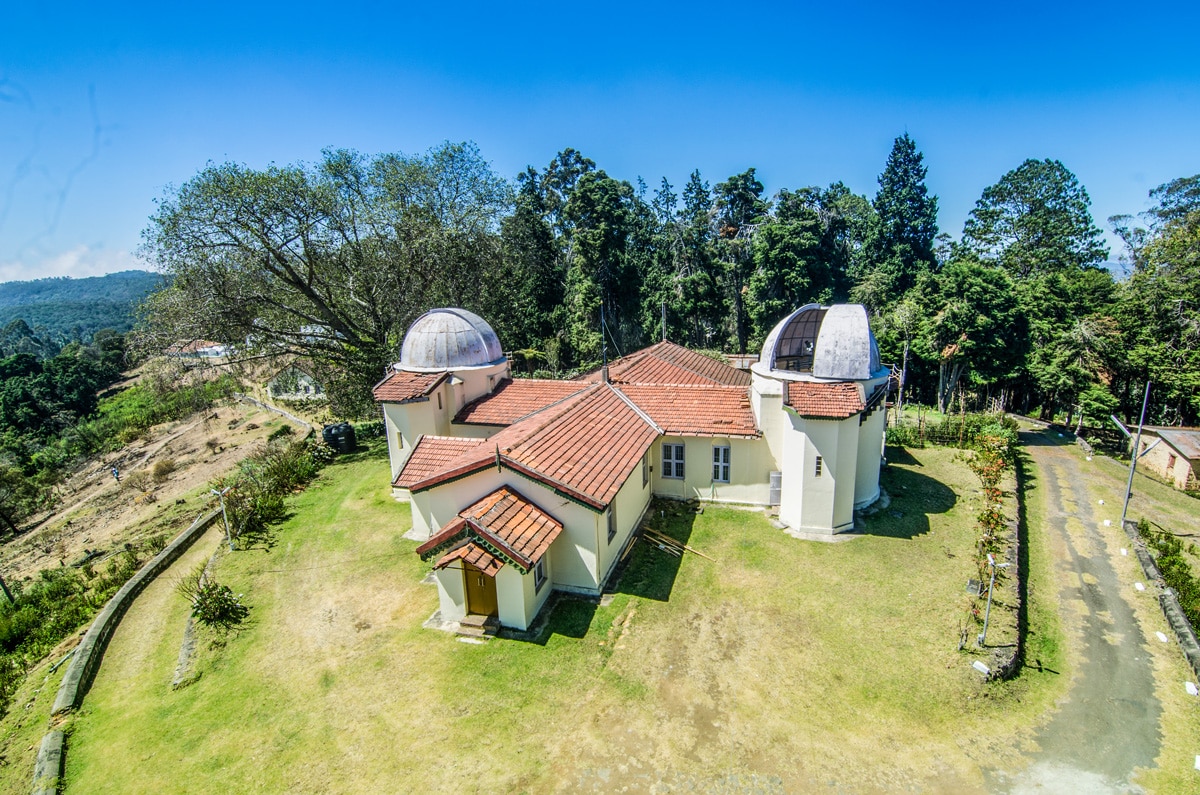
SUNRISE AT KODAIKANAL
India is in the midst of one of the biggest eras of space exploration. After the historic landing of the Chandrayaan-3 near the Moon’s South Pole, it has successfully placed the Aditya L1 spacecraft, dedicated to studying the Sun with an unobstructed view, at an observation point nearly 15 lakh kilometres away from Earth.
The maiden Indian solar probe entered Lagrange Point 1 (L1) on January 6 to observe the Sun and peel back its enigmatic layers. While it is the first space-based solar observatory, India always had a facility to study the Sun. In fact, it is one of the oldest such observatories on the planet – the Kodaikanal Solar Observatory.
Kodaikanal, located in the picturesque Western Ghats of Tamil Nadu, is known for its cold breezes, lush green hills and tall pine trees. But what has truly made it stand out is the array of telescopes lined up neatly on the hill that stare at the star.
With a road dedicated to itself, the solar observatory, spread over an area of 113 acres, has emerged as an important landmark among the locals.
The observatory has been continually recording the Sun for over a century, boasting an impressive collection of solar observations spanning 1250 years, done on a daily basis.
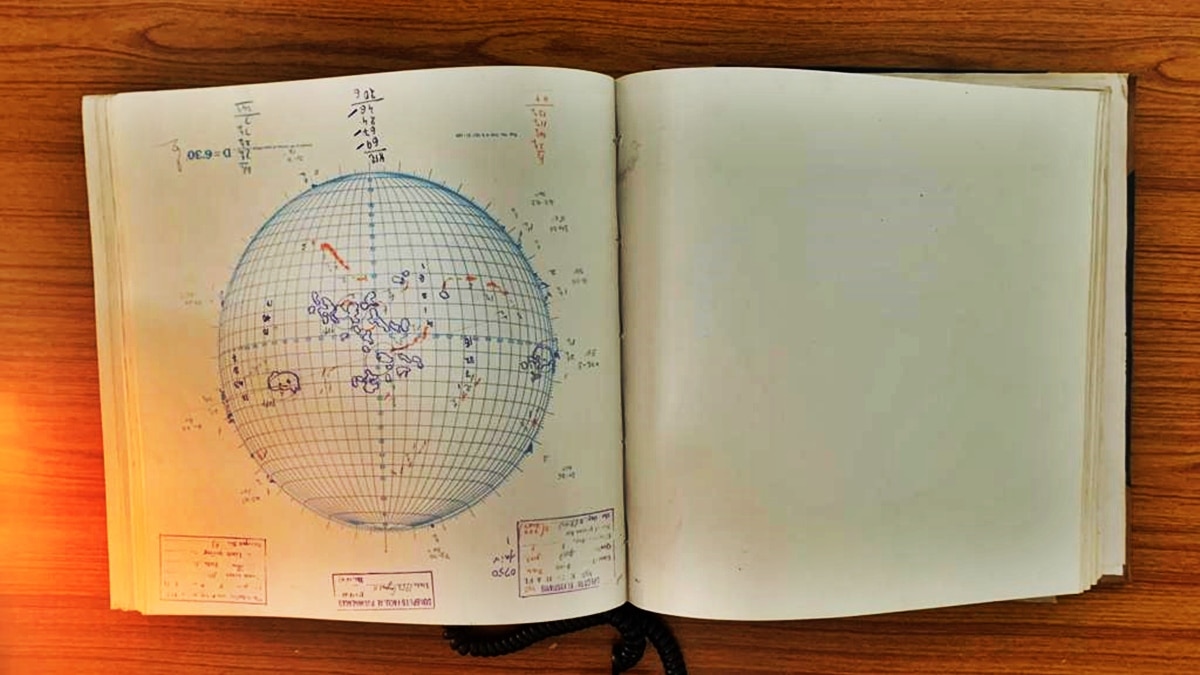
A BRIEF HISTORY IN TIME
The origins of the Kodaikanal Solar Observatory lie in the British Empire. Established in 1899, this facility garnered a reputation as a prominent astronomical centre focused on determining the fundamental positions of stars.
It became a primary source for stellar observations cataloguing 11,000 stars in the southern hemisphere by the beginning of the 19th century.
Kumaravel Pichaimani, Technical Officer at the Kodaikanal Solar Observatory, told IndiaToday.in that the solar facility ranks among one of the oldest in the world, and it’s taken an amazing feat by a team of dedicated engineers, scientists and technicians to keep it running for a century.
The facility’s original equipment was initially a part of the Madras Observatory; it was shifted to Kodaikanal by the year 1904 as the new location with its impressive altitude provided apt conditions for continuous observation of the Sun throughout the day.
Initially maintained by the Indian Meteorological Department (IMD), it was transferred to the Indian Institute of Astrophysics (IIA), Bengaluru in the early 1960s.

WE ALL NEED THE SUN
Life on Earth is the result of the continuous outpouring of energy from the Sun, but like everything in the universe, the Sun too has a finite life. Nearly 4.6 billion years old, the star in our solar system has another 5 billion years of fuel left, which makes it ultra-important to ensure we keep track of its activity.
Enters the Kodaikanal Solar Observatory.
The observatory’s role is to keep looking out at the Sun and track the changes over time. The century-old observations have revealed how the star has evolved over the decades.
The Sun is not a quiet star with a cycle spanning 11 years, during which the activity on the surface peaks and drops.
Currently, in the 25th solar cycle, the Sun is expected to see a peak in activity known as maxima in 2024-2025. This period is what excites scientists and astronomers involved in solar physics.
“The next two years are going to be the most exciting time in any solar physicist's life as the Sun goes through the maxima with activity peaking on its surface,” said Anand MN, who studies the Sun at the Kodaikanal Solar Observatory.
Solar maxima results in an increased number of sunspots on the Sun's surface, as well as a higher frequency of solar flares and coronal mass ejections (CMEs) directed towards the inner planets including Earth.
This makes the observatory one of the most sought-after globally for data to provide the latest information on what’s happening out there.
LIGHTING UP THE SUN
The observatory has 7 legacy telescopes established in different decades since the early 1900s that have been deployed to observe the Sun in three different wavelengths.
While six telescopes – Spectro Heliogram Telescope, Twin Telescope, Kodai Tower Tunnel Telescope, H-Alpha Telescope, Warm, 6-inch telescope – are used for solar observation, the seventh, dubbed the 8-inch telescope, is used to observe the night sky. The IIA also has a dedicated fleet of stellar telescopes located in Hanle of Ladakh.
The six telescopes look at specific solar wavelengths that are not visible to the naked eye.
In solar astronomy, scientists study the Sun's atmosphere by observing certain spectral lines. The spectral lines analysed at Kodaikanal are White Light, Calcium K, and H Alpha, which are key to observing solar activity, prominence (eruptions that escape the Sun), filaments, which are dense gas suspended in the Sun's atmosphere, and sunspots.

A team of 12 observers are tasked with maintaining the telescope and continuing the observations uninterrupted seven days a week, 365 days a year, given clear skies.
Senior scientist, Annapurni Subramanyam said that to study the solar activity on the sun, it is essential to monitor it every day. This is what they are doing at Kodaikanal.
“Apart from this, transients are occurring on the sun such as flare and filament eruptions. These can affect the near-Earth space and space weather. Monitoring those from the ground is critical for the studies of such events so that we can one day be able to predict them before they occur,” the IIA Director added.
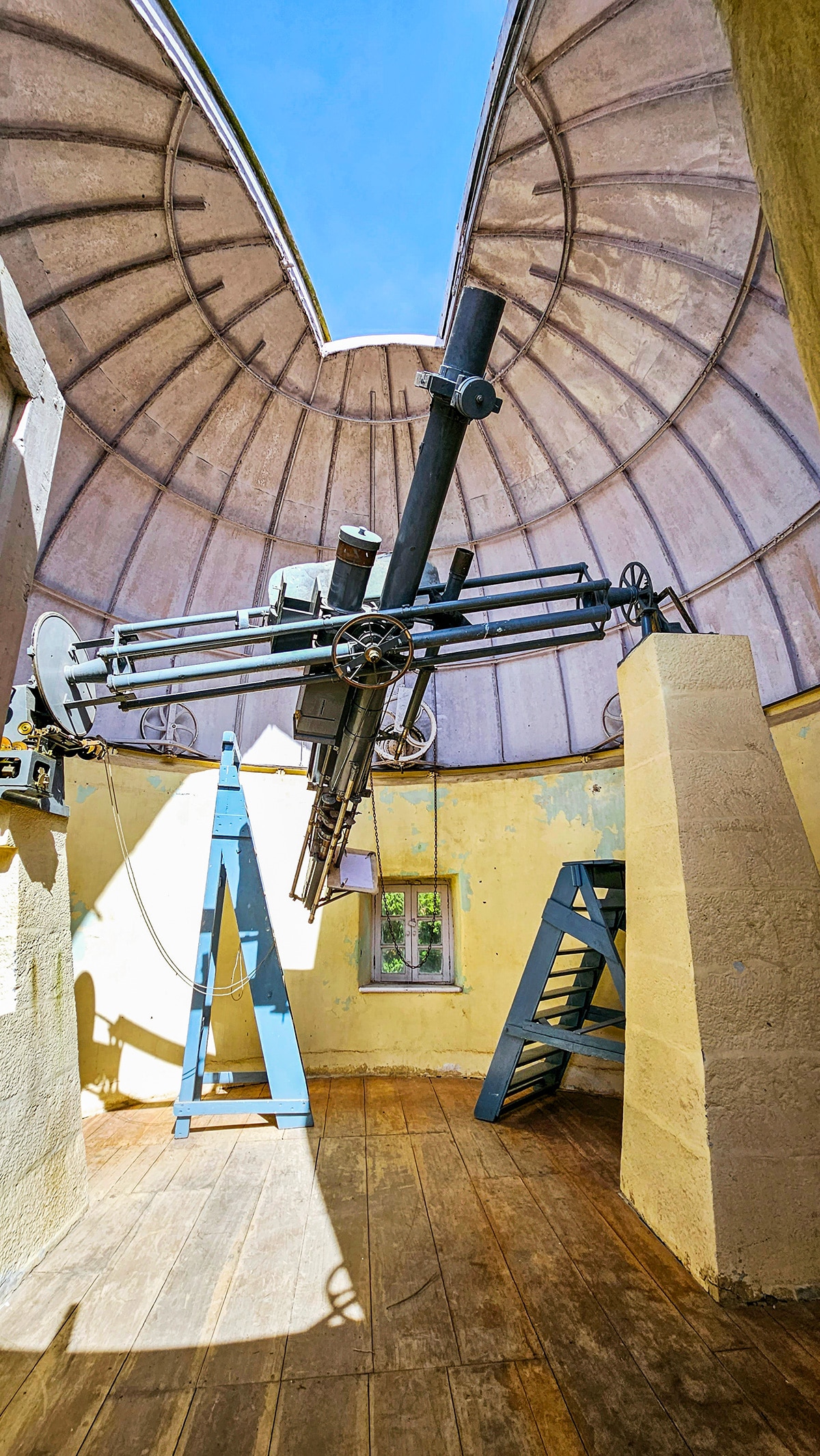
SAVING A CENTURY-OLD LEGACY
Kodaikanal is located at an altitude of nearly 2,500 meters above sea level, which makes it ideal for solar observations with over 220 days of clear skies to advance the observation.
With low dust pollution and lower atmospheric turbulence, the region enjoys ideal conditions needed to focus the telescope's mirrors towards the Sun as it rises in the East.
The success of the observatory can be gauged from the fact that it has over 1.5 lakh recorded days of observation of the sun, giving scientists a wide range of data to understand how our Sun has changed, its magnetic field evolved and what has been its effect on inner and outer planets in Solar System over time.
The Indian Institute of Astrophysics has also completed the herculean task of digitising these observations, giving anyone interested access to all of its recorded history. The observations were recorded on special films made of glass plate and emulsion that have now ceased production, forcing the system to be overhauled to switch to digital format.
The films, which were prone to fungus infestation, required special attention to be kept in low humid conditions and constant attention. The observers have digitised 1.5 lakh analogue films to save for posterity using special software designed for the Observatory.

A TAG-TEAM AHEAD
The Kodaikanal Observatory will now work in tandem with the Aditya L1 mission as astronomers use data from the two high-tech facilities to look at the Sun in new and finer details. While one is on Earth, the other one is operating in the coldness of space.
The Aditya L1 mission is packed with an impressive suite of seven payloads designed to observe various aspects of the Sun, including its photosphere, chromosphere, and corona. It will also measure the variation in magnetic field strength at the halo orbit around L1.
The spacecraft will deepen our understanding of solar eruptive events and their impact on space weather, which could eventually help us better gauge the dynamics that power the Sun, make it angry and at times quiet. The features that have been observed from Kodaikanal over decades.

"Kodaikanal Solar Observatory provides one of the longest series of solar activity observations. These observations are important for constraining the long-term variations in the solar magnetic cycle as well as the modulation of solar radiation that is governed by magnetic features on the Sun. The Solar Ultraviolet Imaging Telescope onboard AdityaL1 complements these historic observations by space-based investigations of how magnetic features influence the Sun's radiation in energy bands that impact Earth's atmospheric dynamics and climate. In AdityaL1 we have a modern machine that complements and enhances India's strong heritage in solar physics," said Prof Dibyendu Nandi.
Prof. Nandi, who led the Space Weather Monitoring and Predictions Plan committee for the Aditya L1 mission, said that it is time to build upon the heritage of Kodaikanal Solar Observatory and develop more modern ground-based solar observing facilities in locations that are more conducive to solar observations - such as the Indian Himalayas.

SMALL TOWN, BIG PART
While the Sun powers all life on Earth, it also tends to disrupt the modernity of the 21st century.
A strong ejection from the Sun could damage satellites, create atmospheric drags, and hit power grids and radio networks creating blind spots that could create major issues both strategically, geopolitically and economically for life on the planet. Imagine a military satellite tasked with monitoring nuclear sites goes blind due to radiation from the Sun. It leaves a country vulnerable.
This makes it urgent to study the Sun in finer detail to be able to predict such events and prepare for them in advance.
With countries mounting space missions and sending batches of astronauts, who would eventually settle down on the Moon and then on to Mars, they would require a constant update to prepare for the unshielded radiation from the Sun that travels across the length and breadth of the Solar System at unparalleled speeds.
That’s where data and observations from India’s oldest solar observatory will come into play. Kodaikanal could be a small hill station in India, but its work could shape the future of humanity as we push the limits of space exploration.
While it may not seem so apparent, this town does have a large role in the grand canvas of our Solar System that runs on the mercy of our Sun.

Photo: Anand MN, Chrisphin Karthick, Nasa, Isro
- Solar Eclipse 2024
What the World Has Learned From Past Eclipses
C louds scudded over the small volcanic island of Principe, off the western coast of Africa, on the afternoon of May 29, 1919. Arthur Eddington, director of the Cambridge Observatory in the U.K., waited for the Sun to emerge. The remains of a morning thunderstorm could ruin everything.
The island was about to experience the rare and overwhelming sight of a total solar eclipse. For six minutes, the longest eclipse since 1416, the Moon would completely block the face of the Sun, pulling a curtain of darkness over a thin stripe of Earth. Eddington traveled into the eclipse path to try and prove one of the most consequential ideas of his age: Albert Einstein’s new theory of general relativity.
Eddington, a physicist, was one of the few people at the time who understood the theory, which Einstein proposed in 1915. But many other scientists were stymied by the bizarre idea that gravity is not a mutual attraction, but a warping of spacetime. Light itself would be subject to this warping, too. So an eclipse would be the best way to prove whether the theory was true, because with the Sun’s light blocked by the Moon, astronomers would be able to see whether the Sun’s gravity bent the light of distant stars behind it.
Two teams of astronomers boarded ships steaming from Liverpool, England, in March 1919 to watch the eclipse and take the measure of the stars. Eddington and his team went to Principe, and another team led by Frank Dyson of the Greenwich Observatory went to Sobral, Brazil.
Totality, the complete obscuration of the Sun, would be at 2:13 local time in Principe. Moments before the Moon slid in front of the Sun, the clouds finally began breaking up. For a moment, it was totally clear. Eddington and his group hastily captured images of a star cluster found near the Sun that day, called the Hyades, found in the constellation of Taurus. The astronomers were using the best astronomical technology of the time, photographic plates, which are large exposures taken on glass instead of film. Stars appeared on seven of the plates, and solar “prominences,” filaments of gas streaming from the Sun, appeared on others.
Eddington wanted to stay in Principe to measure the Hyades when there was no eclipse, but a ship workers’ strike made him leave early. Later, Eddington and Dyson both compared the glass plates taken during the eclipse to other glass plates captured of the Hyades in a different part of the sky, when there was no eclipse. On the images from Eddington’s and Dyson’s expeditions, the stars were not aligned. The 40-year-old Einstein was right.
“Lights All Askew In the Heavens,” the New York Times proclaimed when the scientific papers were published. The eclipse was the key to the discovery—as so many solar eclipses before and since have illuminated new findings about our universe.

To understand why Eddington and Dyson traveled such distances to watch the eclipse, we need to talk about gravity.
Since at least the days of Isaac Newton, who wrote in 1687, scientists thought gravity was a simple force of mutual attraction. Newton proposed that every object in the universe attracts every other object in the universe, and that the strength of this attraction is related to the size of the objects and the distances among them. This is mostly true, actually, but it’s a little more nuanced than that.
On much larger scales, like among black holes or galaxy clusters, Newtonian gravity falls short. It also can’t accurately account for the movement of large objects that are close together, such as how the orbit of Mercury is affected by its proximity the Sun.
Albert Einstein’s most consequential breakthrough solved these problems. General relativity holds that gravity is not really an invisible force of mutual attraction, but a distortion. Rather than some kind of mutual tug-of-war, large objects like the Sun and other stars respond relative to each other because the space they are in has been altered. Their mass is so great that they bend the fabric of space and time around themselves.
Read More: 10 Surprising Facts About the 2024 Solar Eclipse
This was a weird concept, and many scientists thought Einstein’s ideas and equations were ridiculous. But others thought it sounded reasonable. Einstein and others knew that if the theory was correct, and the fabric of reality is bending around large objects, then light itself would have to follow that bend. The light of a star in the great distance, for instance, would seem to curve around a large object in front of it, nearer to us—like our Sun. But normally, it’s impossible to study stars behind the Sun to measure this effect. Enter an eclipse.
Einstein’s theory gives an equation for how much the Sun’s gravity would displace the images of background stars. Newton’s theory predicts only half that amount of displacement.
Eddington and Dyson measured the Hyades cluster because it contains many stars; the more stars to distort, the better the comparison. Both teams of scientists encountered strange political and natural obstacles in making the discovery, which are chronicled beautifully in the book No Shadow of a Doubt: The 1919 Eclipse That Confirmed Einstein's Theory of Relativity , by the physicist Daniel Kennefick. But the confirmation of Einstein’s ideas was worth it. Eddington said as much in a letter to his mother: “The one good plate that I measured gave a result agreeing with Einstein,” he wrote , “and I think I have got a little confirmation from a second plate.”
The Eddington-Dyson experiments were hardly the first time scientists used eclipses to make profound new discoveries. The idea dates to the beginnings of human civilization.
Careful records of lunar and solar eclipses are one of the greatest legacies of ancient Babylon. Astronomers—or astrologers, really, but the goal was the same—were able to predict both lunar and solar eclipses with impressive accuracy. They worked out what we now call the Saros Cycle, a repeating period of 18 years, 11 days, and 8 hours in which eclipses appear to repeat. One Saros cycle is equal to 223 synodic months, which is the time it takes the Moon to return to the same phase as seen from Earth. They also figured out, though may not have understood it completely, the geometry that enables eclipses to happen.
The path we trace around the Sun is called the ecliptic. Our planet’s axis is tilted with respect to the ecliptic plane, which is why we have seasons, and why the other celestial bodies seem to cross the same general path in our sky.
As the Moon goes around Earth, it, too, crosses the plane of the ecliptic twice in a year. The ascending node is where the Moon moves into the northern ecliptic. The descending node is where the Moon enters the southern ecliptic. When the Moon crosses a node, a total solar eclipse can happen. Ancient astronomers were aware of these points in the sky, and by the apex of Babylonian civilization, they were very good at predicting when eclipses would occur.
Two and a half millennia later, in 2016, astronomers used these same ancient records to measure the change in the rate at which Earth’s rotation is slowing—which is to say, the amount by which are days are lengthening, over thousands of years.
By the middle of the 19 th century, scientific discoveries came at a frenetic pace, and eclipses powered many of them. In October 1868, two astronomers, Pierre Jules César Janssen and Joseph Norman Lockyer, separately measured the colors of sunlight during a total eclipse. Each found evidence of an unknown element, indicating a new discovery: Helium, named for the Greek god of the Sun. In another eclipse in 1869, astronomers found convincing evidence of another new element, which they nicknamed coronium—before learning a few decades later that it was not a new element, but highly ionized iron, indicating that the Sun’s atmosphere is exceptionally, bizarrely hot. This oddity led to the prediction, in the 1950s, of a continual outflow that we now call the solar wind.
And during solar eclipses between 1878 and 1908, astronomers searched in vain for a proposed extra planet within the orbit of Mercury. Provisionally named Vulcan, this planet was thought to exist because Newtonian gravity could not fully describe Mercury’s strange orbit. The matter of the innermost planet’s path was settled, finally, in 1915, when Einstein used general relativity equations to explain it.
Many eclipse expeditions were intended to learn something new, or to prove an idea right—or wrong. But many of these discoveries have major practical effects on us. Understanding the Sun, and why its atmosphere gets so hot, can help us predict solar outbursts that could disrupt the power grid and communications satellites. Understanding gravity, at all scales, allows us to know and to navigate the cosmos.
GPS satellites, for instance, provide accurate measurements down to inches on Earth. Relativity equations account for the effects of the Earth’s gravity and the distances between the satellites and their receivers on the ground. Special relativity holds that the clocks on satellites, which experience weaker gravity, seem to run slower than clocks under the stronger force of gravity on Earth. From the point of view of the satellite, Earth clocks seem to run faster. We can use different satellites in different positions, and different ground stations, to accurately triangulate our positions on Earth down to inches. Without those calculations, GPS satellites would be far less precise.
This year, scientists fanned out across North America and in the skies above it will continue the legacy of eclipse science. Scientists from NASA and several universities and other research institutions will study Earth’s atmosphere; the Sun’s atmosphere; the Sun’s magnetic fields; and the Sun’s atmospheric outbursts, called coronal mass ejections.
When you look up at the Sun and Moon on the eclipse , the Moon’s day — or just observe its shadow darkening the ground beneath the clouds, which seems more likely — think about all the discoveries still yet waiting to happen, just behind the shadow of the Moon.
More Must-Reads From TIME
- Exclusive: Google Workers Revolt Over $1.2 Billion Contract With Israel
- Jane Fonda Champions Climate Action for Every Generation
- Stop Looking for Your Forever Home
- The Sympathizer Counters 50 Years of Hollywood Vietnam War Narratives
- The Bliss of Seeing the Eclipse From Cleveland
- Hormonal Birth Control Doesn’t Deserve Its Bad Reputation
- The Best TV Shows to Watch on Peacock
- Want Weekly Recs on What to Watch, Read, and More? Sign Up for Worth Your Time
Contact us at [email protected]
You May Also Like

IMAGES
VIDEO
COMMENTS
Indian history. The first newspaper published in India was the Bengal Gazette, generally known as Hickey's ... Hastings encouraged journalism in India by allowing the Samachar-Dar-pan, published by the Serampore missionaries, to be carried by the post ... Indian papers and 25 Indian papers. It is stated in the Asiatic Journal for August, 1826 ...
This period in Indian journalism history was marked by political flux, when the Mughal Empire was in decline and a commercial enterprise from England—the East India Company—was coming to terms with the reality of having assumed political power over most of the sub-continent. ... personal news, notes on fashion, extracts from papers ...
History of Journalism. India has a long history of the freedom struggle that included various challenges. ... The Press Act of 1910 particularly hit Indian papers hard. It empowered the local government to demand a security fee for any 'offensive content' against the government. Nearly 1,000 papers were prosecuted under the Act.
History of Journalism in India UNIVERSITY OF CALICUT SCHOOL OF DISTANCE EDUCATION STUDY MATERIAL BA HISTORY (A dditional Course in lieu of Project) VI Semester HISTORY OF JOURNALISM IN INDIA Prepared & Scrutinized by: Dr.N.PADMANABHAN Associate Professor P.G.Department of History C.A.S.College, Madayi P.O.Payangadi-RS-670358 Dt. Kannur-Kerala.
The history of journalism spans the growth of technology and trade, ... and regional subcultures of India. The Anglo-Indian papers promoted purely British interests. Englishman Robert Knight (1825-1890) founded two important English-language newspapers that reached a broad Indian audience, ...
Indian press had a glorious history which defines it vital role and importance in the struggle for Indian freedom movement. The history of Journalism in India during pre-independence era can be broadly divided into following phases: Phase I (1780-1826): It saw the beginning of journalism in India. James Augustus Hickey published Bengal
Themes of Indian journalism have changed from time to time. Main themes of Indian journalism before 1947 A.D. were political freedom and social reforms. Eminent personalities like Lokmanya Tilak were actively working in the field of journalism. 'Kesari' is a landmark in the history of Indian journalism.
History Compass is a monthly journal providing peer-reviewed summaries of ... Telegraphy and Journalism in Colonial India, c. 1830s to 1900s. Amelia ... This essay argues that a focus on technologies of communication such as the electric telegraph helps us to rethink the historiography of the press in colonial India by drawing attention to the ...
The Part II of the Press Commission Report contains a broad but concise survey of the development of the English and the Indian languages Press in India. It brings out the historical tendencies in so far as they affect the then state of the Press in the country, and serves as a background to the Press Commission enquiry.
History of Indian Journalism by Natarajan, J. Publication date 1955 Topics Hind Swaraj Publisher Publication Division, Ministry of Information and Broadcasting, Govt. of India ... This item is part of a library of books, audio, video, and other materials from and about India is curated and maintained by Public Resource. The purpose of this ...
History of Press in India during British rule. Here is a brief history of the development of the press before independence. 1780: James Augustus Hickey started 'The Bengal Gazette' also known as 'Calcutta General advertiser'. This was the first newspaper published in India which was later stopped because it carried critical articles ...
pioneers in the field of vernacular journalism in India and according to contemporary standards, was "one of the most ably conducted papers of the state."11 Here it would not be out of place to mention that two eminent writers of Kumaon hfrve held that Almora Akhbar was started in 191 3. 12
First domestic news came in 1628. A new era of journalism was ushered with the publication of 'Oxford Gazette' in 1655. In March 1702, the first daily newspaper appeared in London under the name 'Daily Courant.'. James Augustus Hicky launched the first print in India called 'Bengal Gazette' or 'Calcutta General Advertiser' on ...
of the current issue of the South Asia Chronicle its origins in a panel on 'Print Journalism in Modern South Asia' organised by Prof. Dr. Mann the European Association of South Asian Studies in 2016. The idea behind that was to revisit the history of print journalism in the Indian subcontinent in order to expand its thematic repertoire by highlighting less explored topics or rethinking ...
Journalism has a long and rich history in India, dating back to the 18th century. The country has been witness to a plethora of events that have had a significant impact on the evolution of journalism, from the Indian Rebellion of 1857 to the freedom struggle against British colonial rule. In this blog, we will explore the history of journalism ...
Semantic Scholar extracted view of "History of Indian journalism" by J. Natarajan. ... Search 210,667,443 papers from all fields of science. Search. Sign In Create Free Account. Corpus ID: 160626508; History of Indian journalism @inproceedings{Natarajan1955HistoryOI, title={History of Indian journalism}, author={Janaki Natarajan}, year={1955} }
History of Journalism in India. A person known by the name of James Hicky started a paper after seeking permission of the East India Company. This newspaper was called 'Bengal Gazette' (or Calcutta general advertiser). The entire newspaper consisted of only 4 pages. The newspaper was well-known for fearlessly criticizing the money-making ...
This paper focuses on a forgotten chapter in India's modern political history, when the idea of a free press became the locus of the earliest example of constitutional agitation. In the colonial cauldron of the early nineteenth century, protest by Indian and British liberals against press licensing and other restrictions imposed by the East ...
19. Kausik K. Mitra, 'Journalism in India: A Brief Survey with Special Reference to the Freedom of the Press' (Unpublished Master's thesis, Northwestern University, Evanston, 1939), p. 45. 20. See John C. Merrill, Carter R. Bryan and Marvin Alisky, The foreign Press, (Baton Rougue: Louisiana State University Press, 1970). 21.
The history of movement for Indian independence is the history of Indian Journalism in as much as the great national leaders like Mahatma Gandhi, Pandit Nehru, Raja Ram Mohan Roy, Bala ... published in various News Papers and Magazines led to tremendous success touching the hearts of millions of Indians to join the movement for Indian ...
HISTORY OF INDIAN JOURNALISM, ENGLISH, PUBLICATION DIVISION, J. NATARAJAN Addeddate 2018-11-20 06:49:18 Identifier HISTORYOFINDIANJOURNALISM Identifier-ark ark:/13960/t1dk2t50k Ocr ABBYY FineReader 11.0 (Extended OCR) Ppi 600 Scanner Internet Archive HTML5 Uploader 1.6.3. plus-circle Add Review.
A lot happened in journalism after 1857 that played a crucial role in the history of journalism in India. The mutiny of 1857 revealed the divide between British and Indian owned newspapers ...
The maiden Indian solar probe entered Lagrange Point 1 (L1) on January 6 to observe the Sun and peel back its enigmatic layers. While it is the first space-based solar observatory, India always had a facility to study the Sun. In fact, it is one of the oldest such observatories on the planet - the Kodaikanal Solar Observatory.
SSPL-Getty Images. C louds scudded over the small volcanic island of Principe, off the western coast of Africa, on the afternoon of May 29, 1919. Arthur Eddington, director of the Cambridge ...